
- Darien National Park
September, 1999


The south-eastern-most part of Panama is home to the Darien National Park. This is a large area of rainforest land impassable by vehicle, effectively separating Panama from Colombia, and for this reason also known as the Darien Gap. The Pan American highway (stretching from Alaska to Argentina) stops here and resumes in colombia, due to geographical difficultes as well as political and environmental concerns. The navigational difficulty and presence of guerilla groups and drug trafficers (mostly from the Colombian side) makes the Darien Gap a particularly dangerous area.
Whilst in Panama I met a person studing sociology who had visited various parts of the Darien. I found out that there was a reserve of land set aside by the Panamanian government for the Emberá indians (there are five indigenous groups in Panama) residing in the south of the Darien that supposedly wasn´t occupied by the guerilla etc. The area is called Combawa, which is situated on the Sambú river (the main town is also called Sambú). You could either take a light plane (not very backpacker-ish) or a 24 hour trip in the Pacific Ocean on a crappy cargo boat (aah, that's more like it) to Puerto Indio, the first of the 11 or so indian communities in Combawa. Combawa has it's own form of government, and is able to pass and enforce laws as long as it abides by the Panamanian constitution. The men dress in the typical Latin style - trousers, shoes and long-sleeve shirt. The women wear a sarong-style wrap-around skirt to just above knee height. The custom was for the women not to wear a top, but with increasing contact with the outside world, this tradition is unfortunately fading out. Now it´s mainly the women older than maybe 25 who don´t wear a top, and only then mostly in the house. When they walk to the shop, they usually slip something on to cover up. Eg. in the photo below of the ladies doing the washing in the canoe, when I was chatting with them, they had on only their skirts, but when they allowed me to take their photo, they covered up. More information can be found from the following outside sites (all load in a new window):
Taken from the top of a cargo boat from Panama coming into the indigenous village of Sambú in the Darien National Park, also known as the Darien Gap.
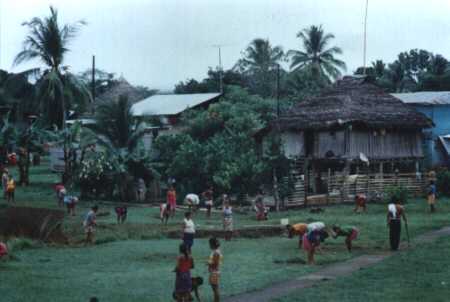
In the adjacent village of Puerto Indio, each Sunday the people work together to clean up the community. In the absence of machinery, they cut the grass with machettes. The district of Sambú, of which Puerto Indio is a part, along with ten other communities, has it's own government, to some extent outside of the workings of the Panamanian Government.

House construction in Puerto Indio. It takes one person about a month to make such a hut. In the wet season one can work for around 4 hours per day, until the rains come, or until it gets too hot. Work is often around 8am to 12pm and maybe some in the afternoon if possible. The frame is made from .....and the joints are nailed together.
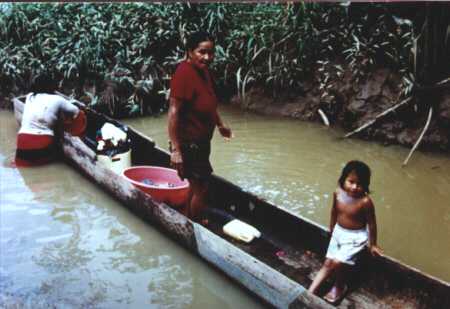
Indigenous ladies doing the washing in the nearby river Sabalo.
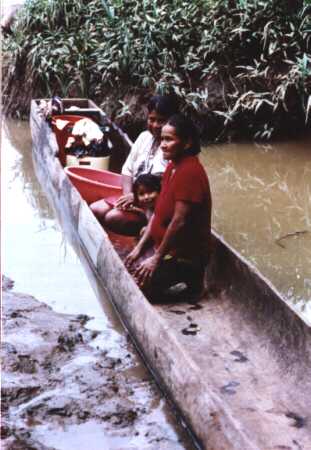
The reason they're washing from the canoe is that the mud on the banks is almost knee deep, so they use the canoe for access and for a place to put the clothes.
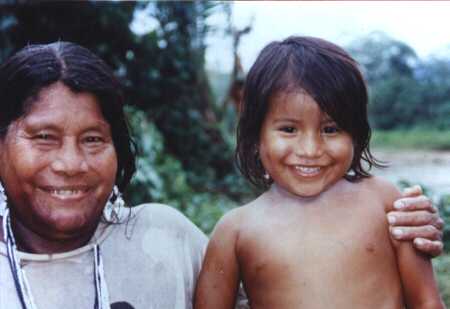
One of the ladies with her daughter.
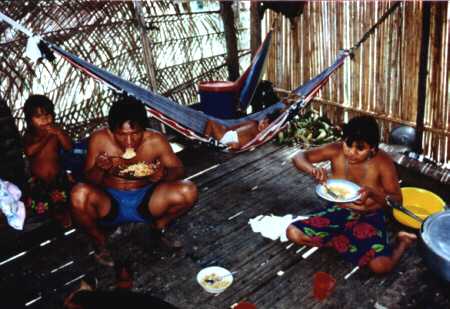
Redil and his family eating dinner. They are not accustomed to eating at a table. Instead, they sit on low stools. Any unwanted food is tipped onto the floor, which falls through the spaces in the strips of wood to the earth below for the chickens to eat.
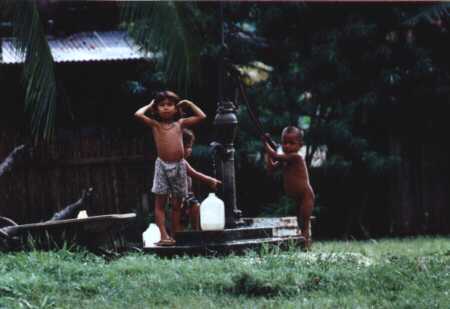
Children pumping water at the local community water pump.
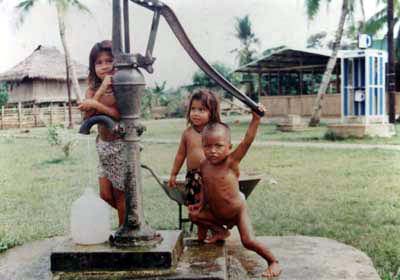
Close-up of the above photo.

'Mowing' the lawn with a machette.
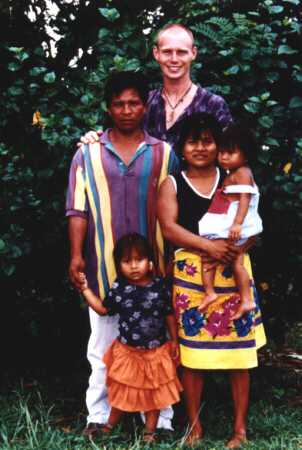
Family photo of Redil Sanapi Neguisama.